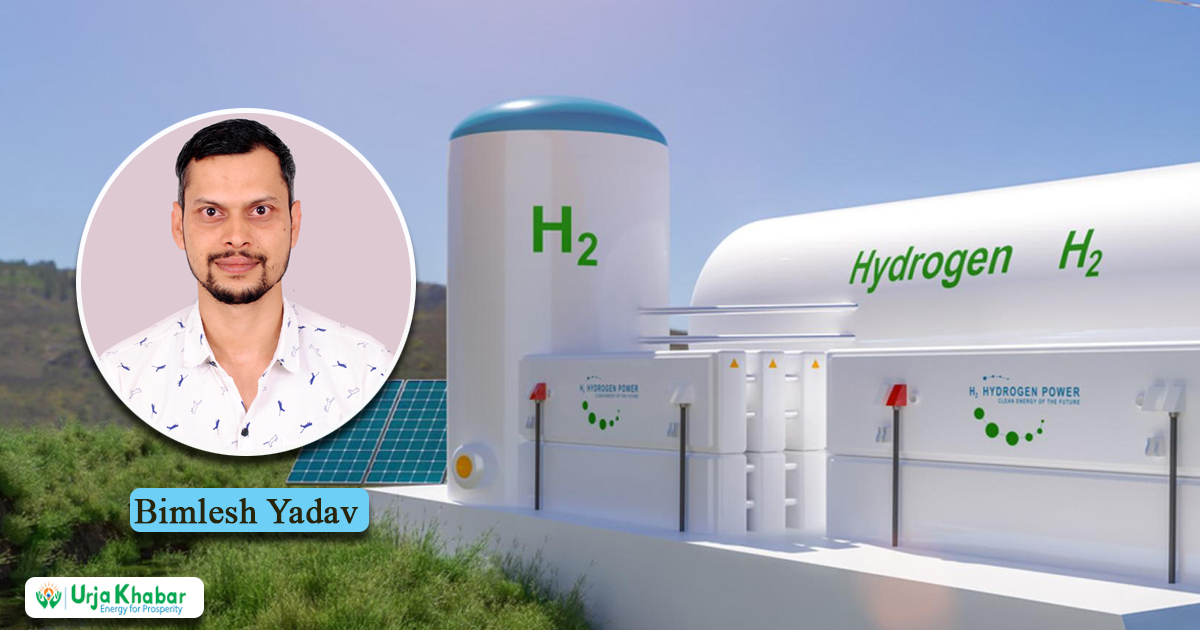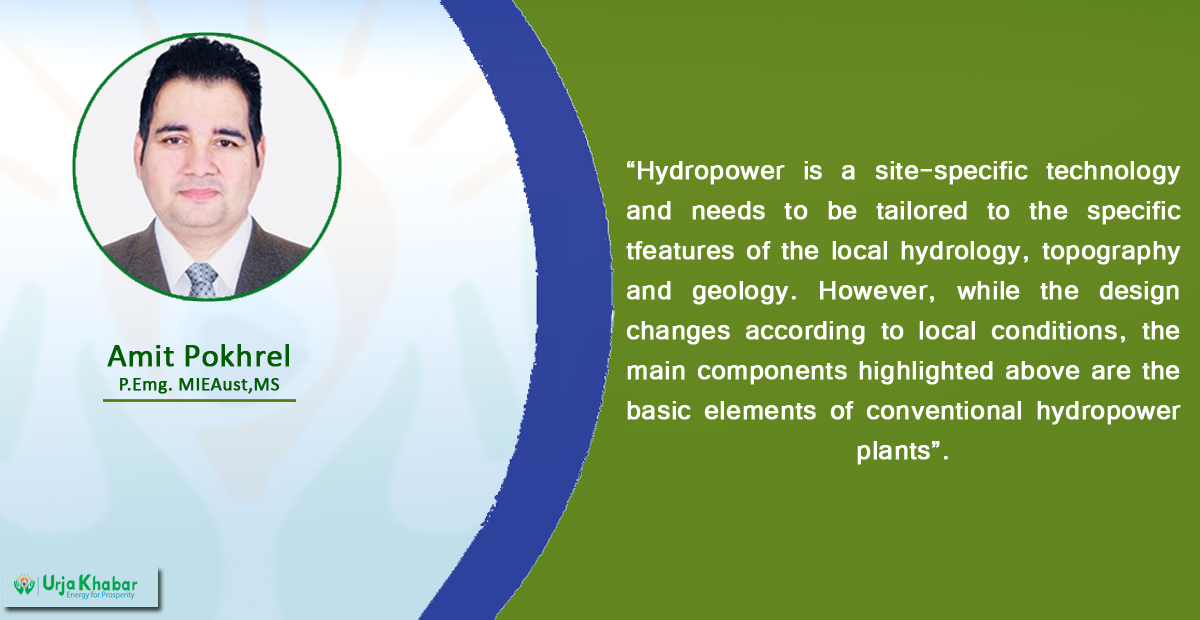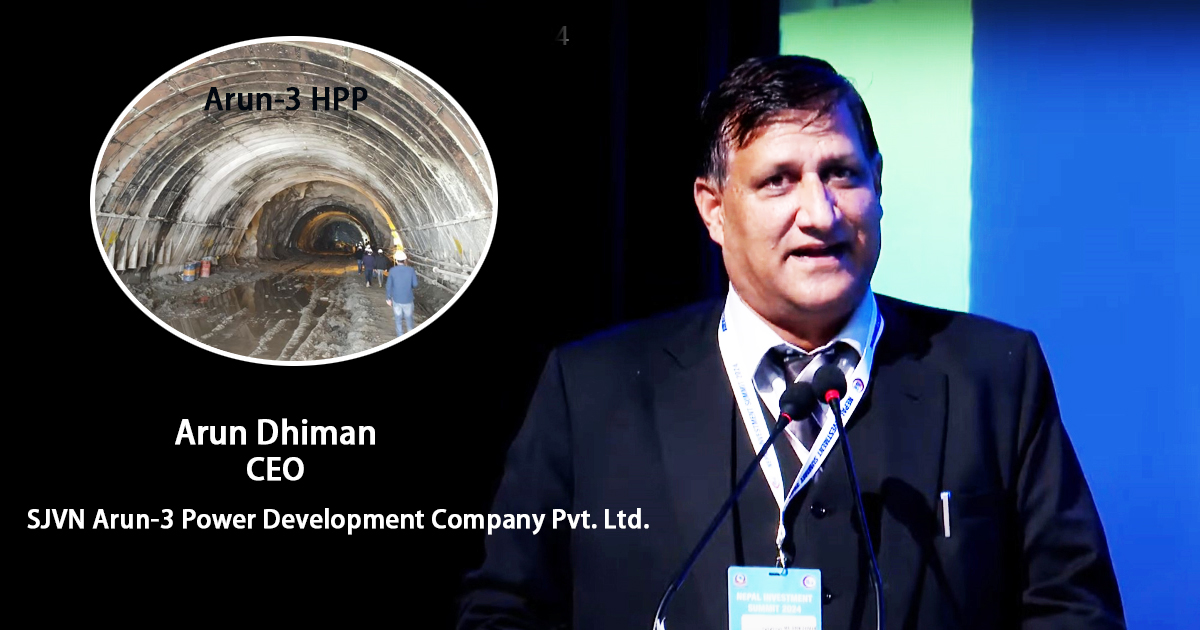Energy Update
Green Hydrogen: Nepal's Pathway to a Sustainable Energy Future

The past decade (2011–2022) was the warmest on record, and projections indicate that temperatures will continue to rise for the foreseeable future. Carbon dioxide (CO2) is mostly to blame for this endless heat. Rising CO2 levels, a persistent problem since the Industrial Revolution, have reached 413 parts per million (PPM), well over the threshold of 350 PPM. Returning CO2 concentrations to pre-industrial levels of 280 PPM would take millennia through natural processes or 130 years with aggressive carbon sequestration, assuming no further emissions. The United Nations Intergovernmental Panel on Climate Change (UN-IPCC) has identified three main approaches to mitigate this escalating problem: increasing the use of renewable energy sources, decreasing the intensity of CO2 emissions using cleaner fuels, and developing more efficient methods of carbon capture, utilization, and storage.
The transition from fossil fuels to renewable energy seems the only feasible solution in the coming decades, and green hydrogen appears to be the best alternative for the energy transition among all renewable energy sources. Hydrogen is touted as the fuel of the future because it can be used in various ways and could completely change energy systems. At COP26, green hydrogen emerged as a solution to mitigate climate change. Since then, most nations have included green hydrogen in their strategies to decarbonize their economies and achieve net-zero emissions. Hydrogen is naturally clean, light, and easy to store. It holds the potential for a carbon-free, long-lasting energy future.

What is Green Hydrogen?
Although hydrogen is a colorless gas, it is often referred to in color names—brown, grey, blue, green, and beyond—each representing a different production method. The colorful names reflect the ways hydrogen is produced, with varying environmental impacts. Hydrogen, upon combustion, releases water, but producing it is carbon and energy intensive.

For instance, brown hydrogen is produced by the gasification of coal, releasing substantial carbon emissions. Grey hydrogen is derived from the steam methane reforming process, where methane is split into hydrogen and carbon dioxide in the presence of high-pressure and high-temperature steam. This method is also energy-intensive and carbon-intensive. Blue hydrogen is akin to brown and grey but combines carbon capture technology, making it a low-carbon option. Then there's green hydrogen, the cleanest of them all. It is produced by splitting water into hydrogen and oxygen using renewable electricity—like solar, wind, or hydropower—through electrolysis.
Beyond these, there are other shades in the hydrogen spectrum. Pink hydrogen is produced using nuclear energy in electrolyzers, while turquoise hydrogen is produced by the pyrolysis of methane gas. White or golden hydrogen refers to naturally occurring hydrogen found underground. Each color highlights a different pathway of producing hydrogen, with green hydrogen standing out as the most promising for a carbon-neutral world.
What Are the Uses ?
Hydrogen has broad applications across various industries. Traditionally, hydrogen has been fundamental in petroleum refineries, chemical industries, as rocket propellant, metal treatment, and food processing. In petroleum refineries, it is used in the desulfurization of processed fossil fuels to ensure cleaner fuels. In chemical industries, hydrogen is a vital feedstock, particularly in ammonia production. Ammonia is further required to produce fertilizers, refrigerants, explosives, and various other materials.
As the world shifts towards cleaner energy, hydrogen's applications expand into new sectors, particularly in energy transition and transportation. Hydrogen is emerging as a key player in power generation, fuel cells for electric vehicles (FCEVs), and industries that are hard to decarbonize or electrify, such as steel, cement, petrochemicals, and aviation. The transportation sector represents a significant portion of the green hydrogen market. Hydrogen can power vehicles in road and off-road transportation, railways, shipping, and aviation. The private sector is increasingly interested in hydrogen's potential, particularly in transportation. For instance, Grove Hydrogen Automotive Company has partnered with DSM Global to introduce FCEVs to Nepal, with the goal of developing Nepal's hydrogen vehicle market and establishing a broad distribution network for FCEVs, signaling the growing importance of hydrogen in the country's transportation future.
Why green hydrogen in Nepal?
Nepal is one of the most vulnerable countries to climate change due to its delicate geography, climate-sensitive livelihoods, and limited adaptive capacity. Despite contributing minimally to global emissions, Nepal has pledged to achieve net-zero emissions by 2045. Green hydrogen has the capacity to significantly contribute to the realization of the Government of Nepal's (GoN) ambitious pledge.
With its abundant water resources, Nepal is among the most hydropower-rich countries in the world. At present, the nation has 3,175 MW of already operational hydropower projects, 3,906 MW now under construction, and 3,899 MW at different phases of development1. It is estimated that Nepal will have around 3,000 MW of surplus energy due to a supply and demand imbalance by 2030. Transforming this excess energy into valuable green hydrogen is a huge opportunity, as it turns otherwise curtailed energy into something of value.
The Kathmandu University (KU) Green Hydrogen Lab (GHL), Nepal's only green hydrogen research institution, estimates that the country could produce 63,072 to 3,153,360 tonnes of green hydrogen annually by 2030, depending on surplus energy use2. GHL's study reveals that the cost of producing hydrogen in Nepal could be as low as USD 1.17 per kg, making it highly competitive compared to the global average of USD 3 per kg3. Moreover, many hydropower projects developed by Nepal's private sector under the Build Own Operate Transfer (BOOT) model will soon be handed over to the GoN, potentially lowering the per-unit cost of electricity to below NPR 2, rendering green hydrogen production more cost-competitive. Due to its hydropower potential and expected electricity surplus, Nepal could become one of the world's most promising green hydrogen development sites.
Currently, hydrogen usage in Nepal is limited to a few industries like chemical and vegetable oil production, and the demand is met by grey hydrogen imported from India and South Korea. Nepal imported 197 m³ of grey hydrogen, amounting to USD 5,9704 in 2021. The cost-competitive green hydrogen produced domestically can be exported to neighboring India, where the green hydrogen market is expected to reach a cumulative value of USD 8 billion by 20305. The export opens opportunities to reduce the huge trade deficit of the nation.
The transportation sector, particularly long to medium-haul vehicles and the hard-to-abate sectors like steel and cement industries, are critical areas for future hydrogen use. With diesel being the main fuel for heavy-duty vehicles, the transportation sector consumes more than 63% of Nepal's total fossil fuels6. In FY 2020/21, Nepal imported 1.69 billion liters of diesel, costing NPR 229 billion, which makes up a huge chunk of the trade deficit. Transitioning from fossil fuels to green hydrogen in this sector could significantly reshape Nepal's economy, enhance energy security, and help achieve the climate goals outlined in the country's second Nationally Determined Contributions (NDC) and Net-Zero Strategy 2045.
In the cement industry, the demand is projected to grow to 26 Mt of cement by FY 2024-25. The industry currently emits significant CO2—about 1 kg of CO2 for every kg of cement produced7. The sector's emissions contribute 379.8 Gg CO2 eq. to the country's total emissions. In 2021, Nepal imported NPR 21.4 billion of coal for cement production and other uses. Adopting green hydrogen as an alternative to coal could be a game-changer, aiding Nepal in achieving its net-zero target, fostering economic growth, and reducing the trade deficit.
The agriculture sector, which employs around 66% of Nepal's population and contributes one-third of the nation's GDP, is another critical sector. Nepal's annual chemical fertilizer imports are worth around NPR 16 billion, with the current demand at 723,000 tonnes8. However, the country faces a perennial fertilizer shortage, threatening food security. Producing green urea from green hydrogen could reduce reliance on imports, save foreign reserves, and guarantee food security.
Nepal is currently the second least energy-secure country among 127 evaluated nations, primarily due to its import dependence, poor energy mix, and lack of energy storage9. Nepal faces a significant seasonal imbalance in the country's energy mix, with power being exported during the wet season and imported during the dry. Nepal could improve its energy mix and storage capacity by reusing stored hydrogen to generate electricity during the dry season through fuel cells. This would also decrease its reliance on foreign power generation. Consequently, green hydrogen presents an encouraging way for Nepal to improve its energy situation, increase energy security, decrease its trade deficit, and achieve its climate objectives.
Challenges of green Hydrogen in Nepal
Despite its potential, green hydrogen faces significant challenges in Nepal that must be addressed through research, public policy, and commercial investment. The production of green hydrogen is still in its infancy, with most governments, including Nepal's, yet to fully develop policies and strategies to encourage the adoption of green hydrogen technologies. To accelerate production, the government must provide incentives such as tax breaks, land allocation, financing facilities, and mechanisms to certify green hydrogen along the value chain.
One of the major hurdles is the high capital cost associated with green hydrogen production. Studies estimate that each gigawatt (GW) of manufacturing capacity requires an NPR 6.3-9.5 billion investment10. The cost of green hydrogen is closely tied to the cost of electricity, making it 2 to 3 times more expensive than grey hydrogen. Although the cost is expected to decrease as electrolyzer technology advances and renewable energy prices fall, green hydrogen remains costly11.
Additionally, operating an electrolyzer plant requires a highly skilled workforce, which is currently scarce in Nepal. As green hydrogen is an emerging technology, there is a pressing need for collaboration between research institutions and industries to develop and enhance the human resources skills required for this sector.
Recent Developments
Nepal Oil Corporation (NOC), the state-run fuel distribution company, has partnered with KU's GHL to explore the potential of green hydrogen in Nepal and draft relevant policies. This collaboration aims to study hydrogen production, storage, and end-use systems, focusing on its application in the fertilizer industry, making the market growth of hydrogen fuel a logical step forward. Nepal's Green Hydrogen Policy (2024) is a significant development, setting the stage for a comprehensive regulatory framework that addresses safety standards, environmental considerations, permitting processes, and quality standards for hydrogen production, storage, and utilization.
A groundbreaking initiative in this field is the Hydrogen Empowered Hydroelectric Grid (HyHEG) Project, which marks a milestone in Nepal's energy sector. The project is piloting green hydrogen for cooking in Badigad Rural Municipality, with 15 households testing hydrogen stoves following successful trials at KU-GHL. This initiative uses surplus electricity from two local micro-hydropower plants, converting it into hydrogen to replace traditional cooking fuels like gas and firewood.
The project is supported by the Nepal Energy Foundation (NEF) and international partners to improve clean energy access, reduce reliance on biomass, and enhance rural living standards. Key components include developing hydrogen storage and cooking technologies, building local capacity, and integrating gender and social inclusion (GESI) considerations. If successful, this pilot could significantly transform Nepal's energy landscape, reduce import dependency, and improve the quality of life in rural areas. It may also be a major milestone in the nation's economic prosperity.
Conclusion
Nepal's geographical location, abundant hydropower resources, and policy commitments position it as a strong candidate for developing a green hydrogen economy. While challenges remain, such as high capital costs, a skill gap, and safety concerns, recent developments and international collaboration offer promising steps forward. Green hydrogen has the potential to reshape Nepal's energy landscape, contribute to economic growth, reduce the trade deficit, and support the nation's climate goals. It is imperative that the government, private sector, and international partners continue to invest in research, infrastructure, and policy development to realize this potential.
The writer of this article is a Programme Associate at iFOREST, India
References
1. NEA a year in review FY 2023-24
2. Thapa et.al., Green Hydrogen Potential from Surplus Hydropower in Nepal, 2021
3. Nepal explores the possibilities of hydrogen production from 3500 MW surplus hydroelectricity by 2028 - Hydrogen Central (hydrogen- central.com)
4. Nepal Hydrogen imports by country | 2021 | Data (worldbank.org)
5. Harnessing_Green_Hydrogen.pdf (niti.gov.in)
6. Hydrogen as a fuel for the electrifying transportation sector in Nepal: Opportunities and Challenges
7. Cement production is massive contributor to carbon dioxide emissions globally | World Economic Forum (weforum.org)
8. Second Nationally Determined Conditions by Government of Nepal, 8-dec-2020
9. Nepal at a glance | FAO in Nepal | Food and Agriculture Organization of the United Nations
10. https://kathmandupost.com/money/2018/07/27/nepal-to-import-fertiliser-under-govt-to-govt-deal
11. IRENA (2020), Green Hydrogen Cost Reduction: Scaling up Electrolysers to Meet the 1.5⁰C Climate Goal, International Renewable Energy Agency, Abu Dhabi.
Conversation
- Info. Dept. Reg. No. : 254/073/74
- Telephone : +977-1-5321303
- Email : [email protected]














